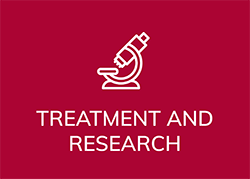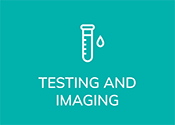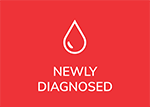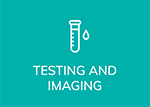Over the course of a year of monthly meetings, CLL Society Bloodline will teach the BASICS needed to understand CLL. It will also provide news, help with the acronyms and new vocabulary words, and offer simple fun quizzes.
MONTHLY QUIZ: Choose the correct statement below:
- CLL most commonly presents in men and in the elderly (around 70).
- CLL affects men and women equally.
- CLL is roughly equally common among all races and ethnicities.
ANSWER: The correct answer is #1. CLL is more common in men and the average age at diagnosis is about 70 and slowly getting younger. It is quite rare but can be seen in those under 30. About 10% present under 50 and 5% under 40. CLL is more common among Whites (5.1 cases per 100,000) than other races (Blacks: 3.2 cases per 100,000; Hispanics: 2.1 cases per 100,000; Asian Americans: 1.1 per 100,000). Ashkenazi Jews are especially at higher risk.
NEWS:
- We are grateful to everyone who joined us for the second annual Celebrating Long Lives 5K!
- Join us on June 27th CLL Society webinar Performing a COVID-19 Risk Assessment: Understanding What Has Changed Now That the Government Response Has Scaled Down.
- We have opened a support group interest survey for veterans and active duty military with CLL or SLL and their care partner, which can be found on the website under Veterans with CLL / SLL.
- Paxlovid is now FDA approved to treat COVID-19. Before it was only emergency use authorized.
- We will be reporting from 3 major cancer conferences in June: ASCO, EHA, and ICML.
THE BASICS: Watch and Wait or Active Surveillance
The first treatment for about 95% of CLL patients is “Watch and Wait” or as we prefer to call it “Active Observation” or “Active Surveillance.” We are working to change the term in order to suggest a more active approach. Patients often still call it, “Watch and Worry”. It is at first glance one of the most counter-intuitive concepts in CLL. With many types of cancer early detection is critical with the prognosis getting worse with more advanced stages of the disease. That is the philosophy behind routine PAP smears, mammograms, colonoscopies, PSA and skin check: catch the cancer early.
But in CLL, until a study reported in 2019 that for asymptomatic high-risk patients, early intervention with ibrutinib improved progression free survival and time to next treatment, there were no data showing that earlier treatment at the time of diagnosis helped in any way. There are two main reasons for this lack of benefit:
- Until recently, all treatment options were either relatively toxic or ineffective or both.
- Some 30% of patients will never need treatment so treating early only exposes them to toxicities with no benefits.
Even with the positive trial in 2019, the role for early intervention approach is controversial. Why take a medicine for years that you may never need and has not yet been shown to improve overall survival when taken early? Is taking it when needed just as good? Outside of a clinical trial, “Active Observation or Surveillance” or “Watch and Wait” is still the smart option. Trials are in progress using novel agents in high-risk patients such as those with del 17p.
WORD/ACRONYM OF THE MONTH: FLOW CYTOMETRY
Flow Cytometry is a powerful blood test that looks at markers on the cell surface. It is THE test necessary to confirm the diagnosis of CLL by identifying the typical clonal population of cells (CD19, CD20(dim), CD23 and CD5). It can also be used to look for MRD (measurable or minimal residual disease) able to find to 1 cancer cell in 10,000 cells.
If the CLL Society has helped you or a loved one, please consider making a donation.

















